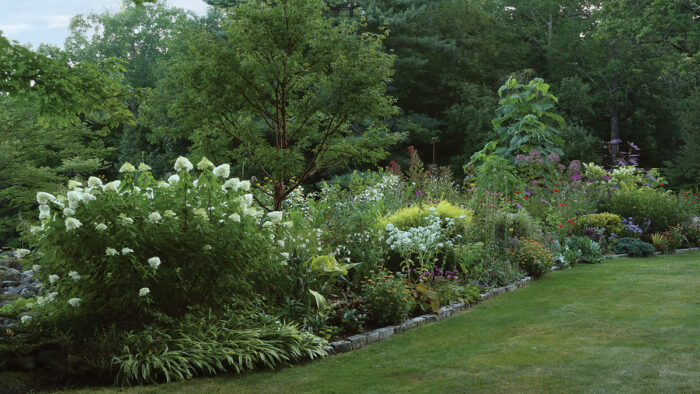
Twenty years ago, I began to create a long flower border against an old stone wall that runs along the west side of our 1760s Cape Cod–style house. Big skies, expansive views, and lots of sun made this the perfect location for a long bed filled with perennials. Over time I widened the border, adding shrubs and small trees for year-round interest and mixing in a diverse assortment of annual and tropical plants to broaden the color palette and to intensify the late-season show. But as some of the faster-growing trees matured, they began to dominate, and several shrubs started taking up too much space. Looking at the border, the eye was no longer directed out to the beautiful views of distant hills, but inward toward the enclosed lawn. I was feeling hemmed in and I needed to find ways to open up the space and get more sun in the garden.
Take a tour of this garden with the designer, watch now
It was a difficult decision, but last spring I took down some of the largest trees with the hope of getting my full-sun border back and bringing plantings back into scale. Although each tree left a big hole, I knew that the existing sun-loving perennials and shrubs would fill in over time. In the meantime, I planned to fill the gaps with annuals that grow tall and wide, such as flowering tobacco (Nicotiana sylvestris, annual) and ‘Amistad’ sage (Salvia ‘Amistad’, Zones 9–11). I also intend to add a few more shrubs for structure and easy maintenance. See the planting plan with plant IDs for this garden here.
Design strategy 1: Remove a plant that outgrows its welcome
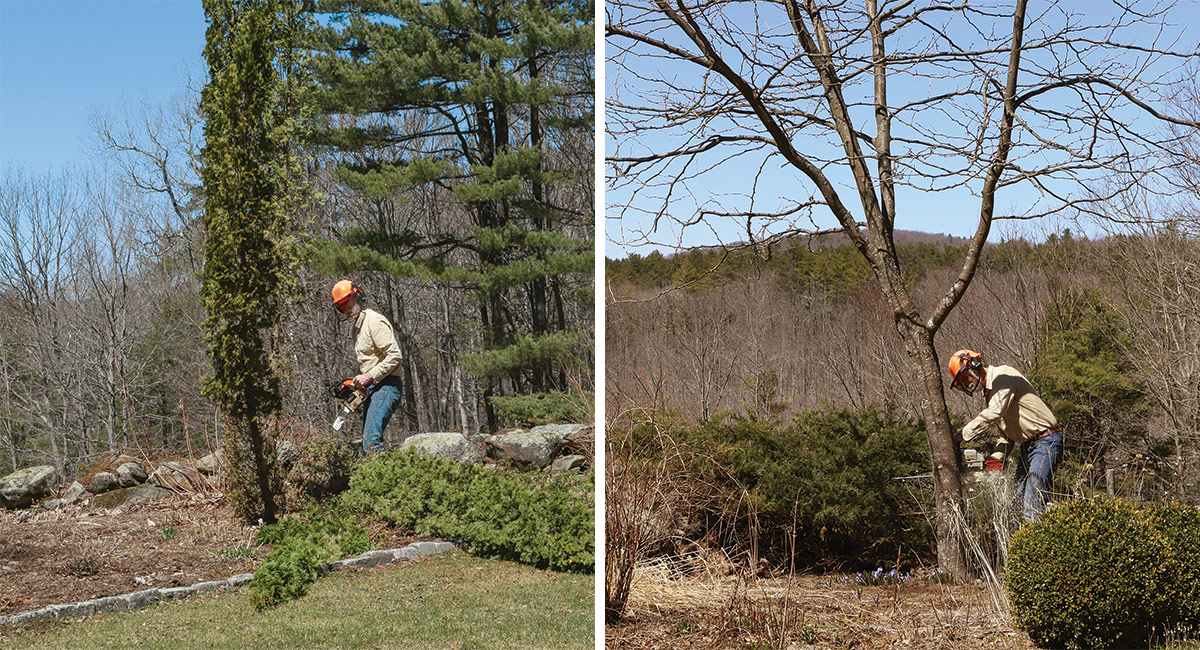
| Trees removed |
The first tree to go was the Sunburst® honeylocust. It was a gorgeous tree with chartreuse new growth that worked well with my colorful and somewhat tropical-looking border. It didn’t drop messy leaves, and its see-through canopy provided filtered shade that many nearby plants tolerated. Unfortunately, it grew larger than I had anticipated and eventually blocked the view behind it. Its height was out of proportion to the rest of the border, and it still had more growing to do.
I also took down two ‘Degroot’s Spire’ arborvitaes that looked great in their middle years but eventually became too tall. Although I was disappointed to see them go, I was also relieved to be done with wrapping them each winter and spraying deer repellent every three weeks year-round. Last to go was the ‘Yellow Lantern’ magnolia, which had matured to 30 feet tall and wide. In an impulsive moment just days before hosting our son’s wedding, we cut it down and then cheered as the gorgeous view was opened up and the setting sun shone unobstructed across the border onto the lawn.

I left the stumps of the honeylocust and magnolia, planning to let them become cut-back shrubs. By early September, five months after it was cut down, the honeylocust had sprouted new growth to about 4 feet. Now I can cut back the new branches every few years so it stays the height I want. The magnolia stump also may push out new growth, with lovely large leaves that would contrast nicely with smaller perennial foliage nearby.
Design strategy 2: For certain shrubs, a cutback may be in order
| Shrubs cut back |
Another tactic for keeping a mixed bed from becoming overcrowded is coppicing. For some trees and shrubs, a cutback in early spring not only keeps them inbounds, but it also pushes them to produce larger, more colorful foliage. The three smokebushes I cut back are especially good examples of this: ‘Grace’, ‘Golden Spirit’, and ‘Royal Purple’ (Cotinus coggygria ‘Royal Purple’, Zones 4–8).
Yellow catalpa (Catalpa ovata, Zones 4–8) can grow up to 30 feet tall and wide, but cutting it back severely each spring causes it to produce large, yellow foliage on a shrublike form that stays about 8 feet tall and wide. Similarly, an annual cutback to princess tree encourages the growth of enormous, tropical-looking green leaves on stems that top out at 12 feet. The leaves look great in the border along with the larger annuals and tropicals I like to incorporate.
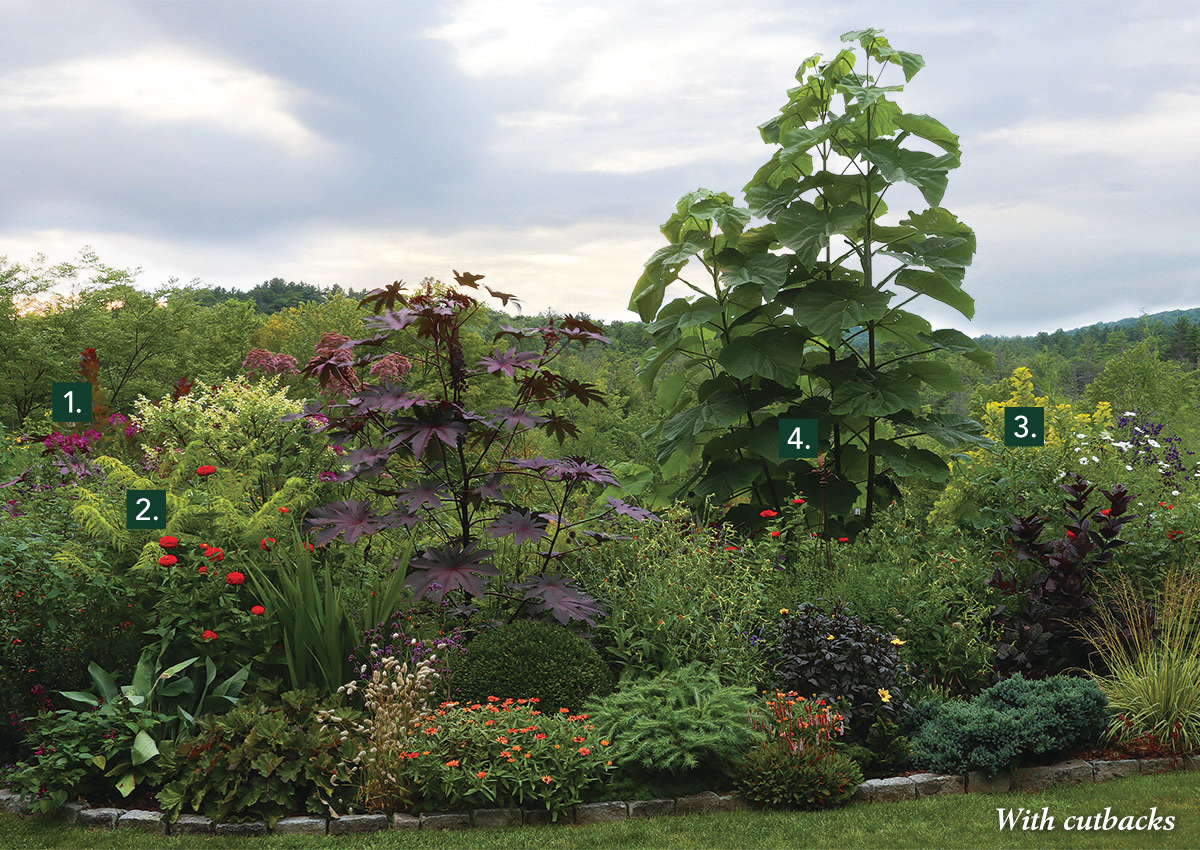
This spring I also cut back an overly mature Tiger Eyes sumac that had started sprawling out onto the lawn. It regrew beautifully, but I have noticed some sumac shoots popping up nearby. If this becomes a nuisance, I may have to remove the shrub altogether.
A surprising number of shrubs will take a severe pruning every year. Don’t be afraid to grab the loppers; the result will often be a better-looking bed.
Design strategy 3: Plan the garden with slow growing plants, and then plan for change
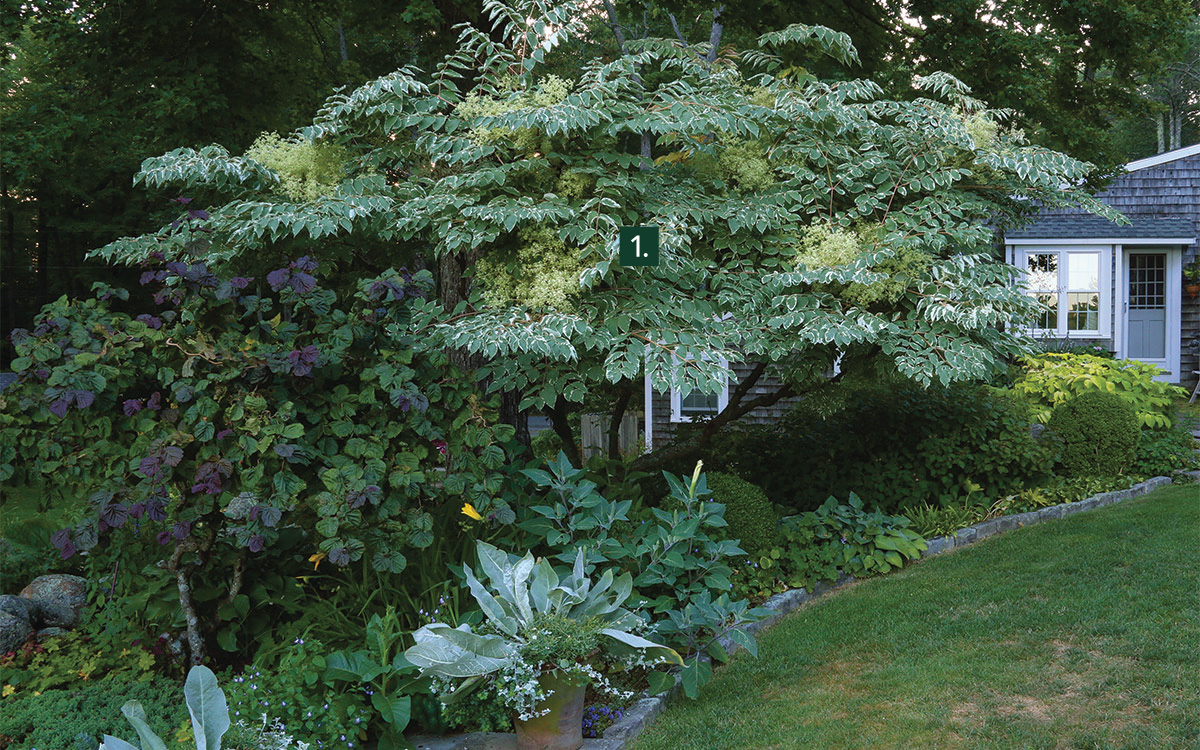
| Slow growers |
When you plant a border that includes trees, consider dwarf varieties or small specimens of slow-growing cultivars that will take years to outgrow their spaces. As these trees mature, you may decide to replace sun-loving perennials with more shade-tolerant varieties in the area underneath. Or you may choose taller trees with open branching patterns, slender trunks, and high canopies, which are less likely to shade out other plants or to interfere with sight lines.
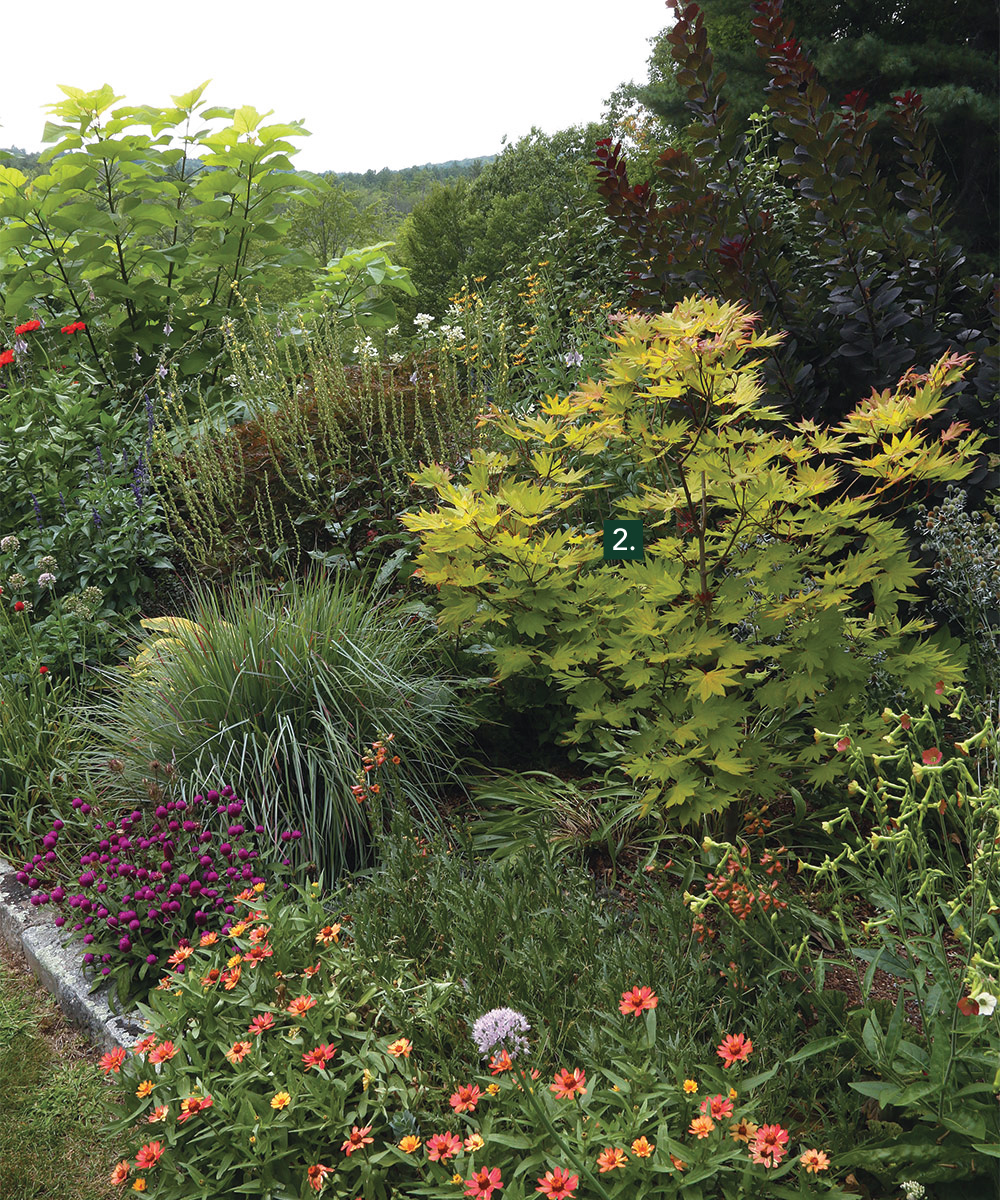
Ideally, you could predict how plants will grow and how your garden will evolve over time, but that’s very difficult. Frankly, I like making changes and have found through experience that plants will rebound more quickly after a big change than you might imagine. Try not to get too attached to any particular plant or idea. At the end of each year, ask yourself if any of the basic building blocks of your garden could be changed. Would anything benefit from being cut back? Would it excite you to have a fresh start in one area of the garden?
Subtraction can be the hardest design change to make, but it can also be the most effective. Negative space helps to open views to more distant trees and sky. I will miss the winter structure of the trees I removed and the feeling of permanence they provided. But at the same time, I am excited about all the possibilities that the return of full sun on my long border will bring.
*Invasive Alert:
Princess tree (Paulownia tomentosa)
This plant is considered invasive in AL, CT, GA, IN, KY, ME, PA, SC, TN, VA, WI, and WV.
Japanese aralia (Aralia elata)
This plant is considered invasive in MD, NH, NJ, NY, and PA.
Please visit invasiveplantatlas.org for more information.
Laura Trowbridge is a garden designer based in Peterborough, New Hampshire.
Photos and illustrations: Carol Collins
Fine Gardening Recommended Products

ARS Telescoping Long Reach Pruner
Fine Gardening receives a commission for items purchased through links on this site, including Amazon Associates and other affiliate advertising programs.

Planting in a Post-Wild World: Designing Plant Communities for Resilient Landscapes
Fine Gardening receives a commission for items purchased through links on this site, including Amazon Associates and other affiliate advertising programs.

Spear & Jackson 4930FZ Razorsharp Telescopic Tree Pruner
Fine Gardening receives a commission for items purchased through links on this site, including Amazon Associates and other affiliate advertising programs.


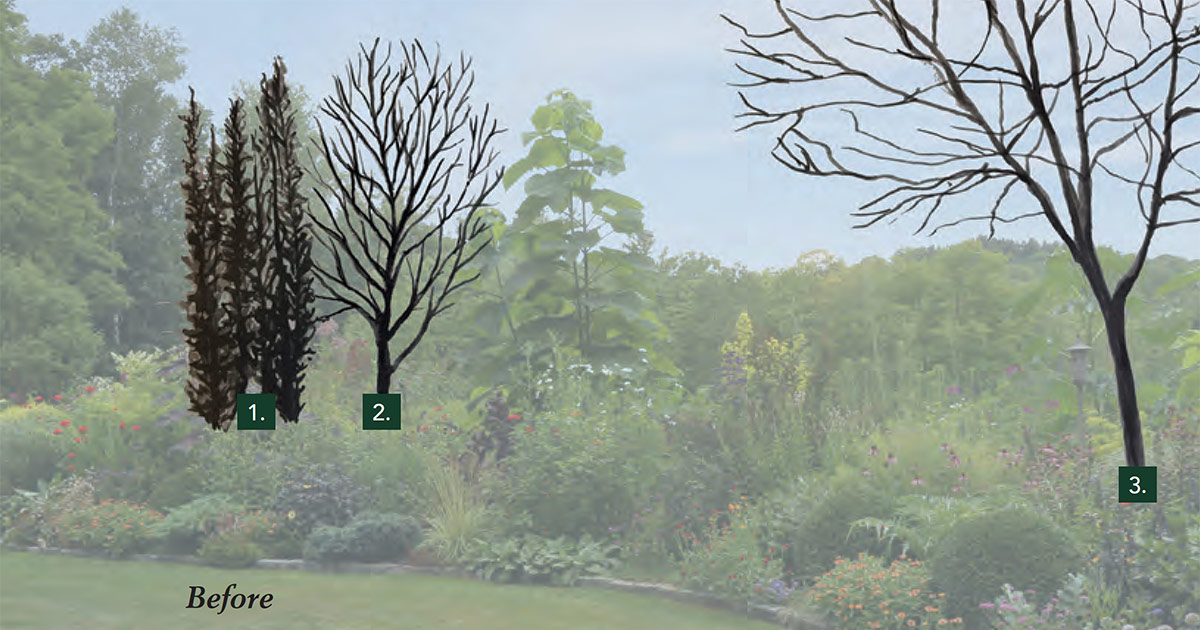
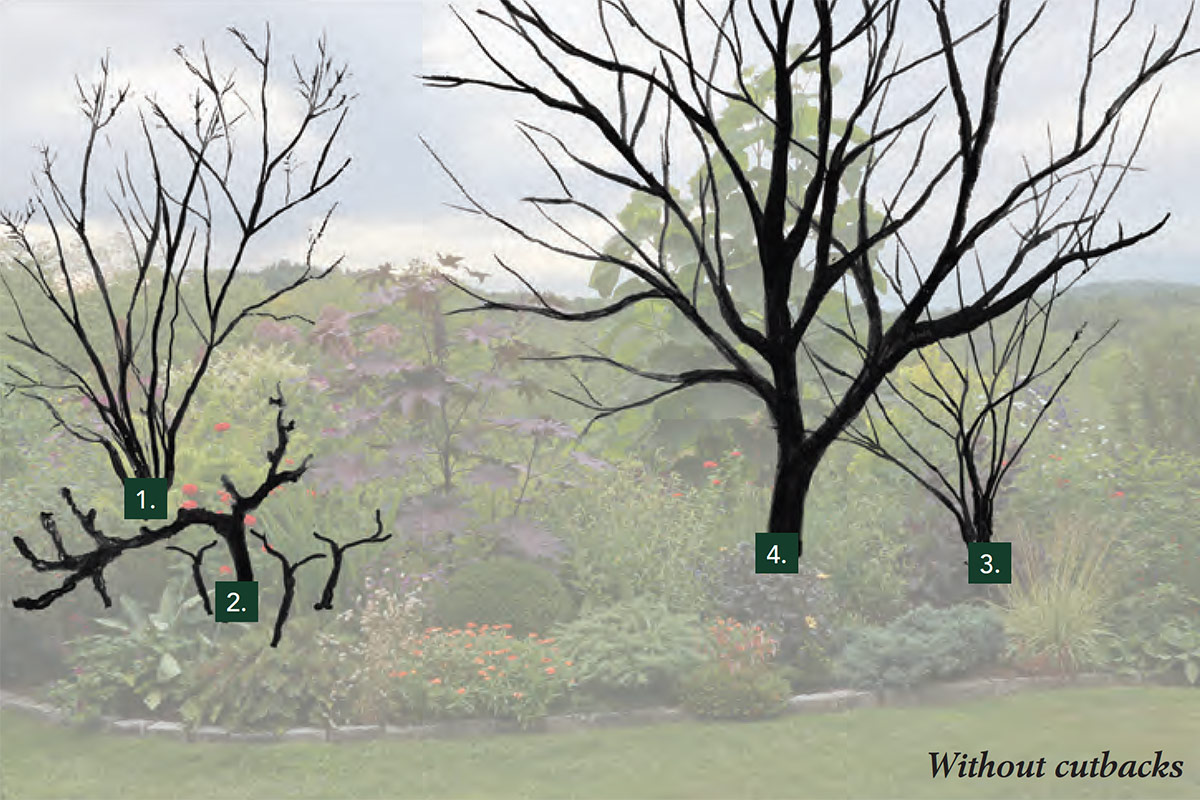
















Comments
Finding any unwanted volunteers and any plants that aren't living up to expectations is the first order of business. Start by mowing the grass and edging if required so you can see exactly where your attention is needed. Get rid of them by digging out their roots. An arborist's services may be required if you have any huge plants or trees that have died. uno online
Remember, transforming an overgrown garden takes time and effort. It's a gradual process, so be patient and enjoy the journey of creating your dream garden. Consider seeking advice from local nurseries or gardening communities for specific guidance tailored to your area.
https://affordableseoservice.org
Log in or create an account to post a comment.
Sign up Log in